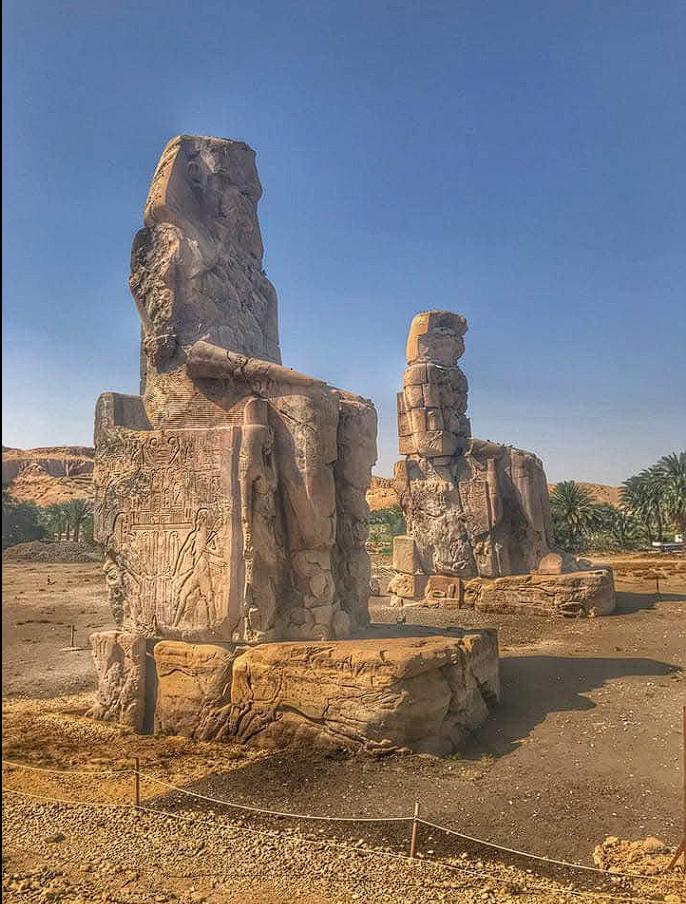The Colossi of Memnon: Egypt’s Silent Sentinels of Time and Mystery
Standing tall at 18 meters (60 feet), the Colossi of Memnon have watched over the Egyptian landscape for over 3,400 years. These monumental statues represent Pharaoh Amenhotep III, who reigned from 1386 to 1349 BC, and were originally placed at the entrance to his grand mortuary temple in the Theban Necropolis near modern-day Luxor. Carved from massive quartzite sandstone blocks, each weighing several tons, the statues were hauled a remarkable 420 miles to their current location.
A Glimpse into the Past: The Original Purpose of the Colossi
At the entrance of Amenhotep III’s temple, these statues stood guard, facing eastward towards the rising sun. Their purpose was not just to awe, but to mark the grand entrance to one of the largest and most impressive temple complexes in Ancient Egypt. The statues were meant to be a symbol of the king’s eternal power, his connection to the divine, and the grandeur of the civilization he ruled.
The Earthquake and the Legend of the Singing Statues
As time passed, earthquakes ravaged the area, and the Nile’s annual flooding eroded the temple, leaving only the two statues behind. However, one of the statues became famous for something much more than its size. Following a major earthquake in the 1st century BC, the northern Colossus was said to “sing” at dawn. This strange phenomenon fascinated travelers and locals alike, with a hauntingly melodic noise emanating from the statue’s cracks.
The name “Colossi of Memnon” actually comes from Greek mythology. Greek visitors, upon hearing of the “singing,” believed the statues were the representation of Memnon, the son of the goddess of dawn, Eos. The Greeks mistakenly associated the statue’s strange noise with the hero’s lament, and the name stuck.
A Silent Testimony to Time and History
Today, the Colossi of Memnon stand as silent witnesses to the passage of time. Despite centuries of weathering and erosion, the statues still bear remnants of their original hieroglyphic inscriptions and graffiti from later admirers. These marks are proof that the statues have long outlasted their original purpose, becoming a living part of Egypt’s history.
Standing there in the hot Egyptian sun, the Colossi seem to embody the resilience of ancient Egypt—enduring, mysterious, and powerful. They continue to inspire awe in those who visit them, telling stories of a once-great civilization that has left an indelible mark on the world.
Conclusion: What Do the Colossi Reveal?
If you could travel back to ancient Egypt, what do you think these statues would reveal about the past? Would they speak of divine power and royal ambition, or whisper of lost time and forgotten glory? Perhaps, like the Colossi of Memnon, they hold secrets that will never truly be uncovered.

CÁC TIN KHÁC
Mary Walton: The Forgotten Inventor Who Helped Clean Up America’s Cities
Tomb of Queen Nefertari in the Valley of the Queens, Egypt
Discover the Hypostyle Hall of the Temple of Hathor at Dendera
Venus de Losange: Unveiling the Mystery of a 20,000-Year-Old Paleolithic Icon